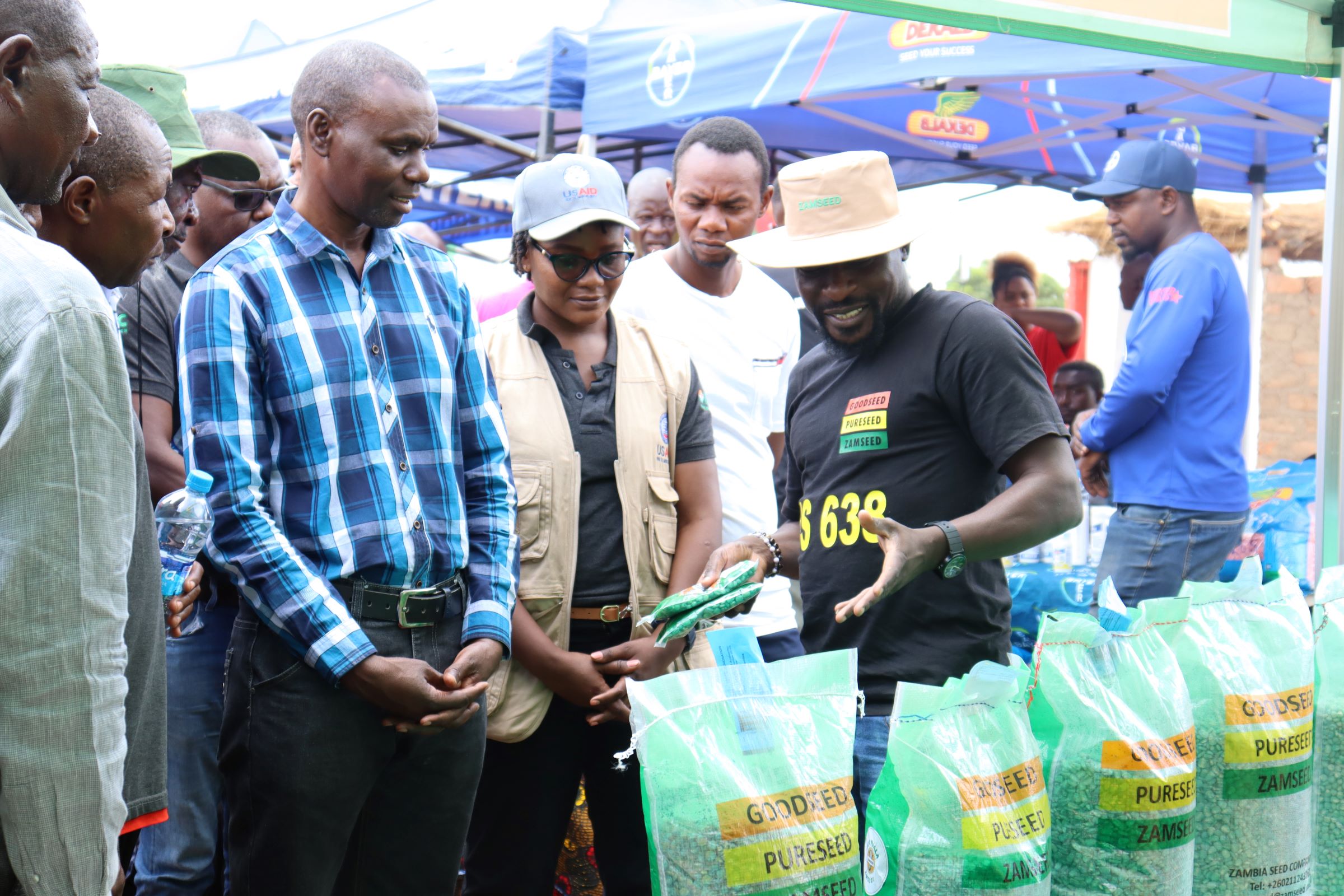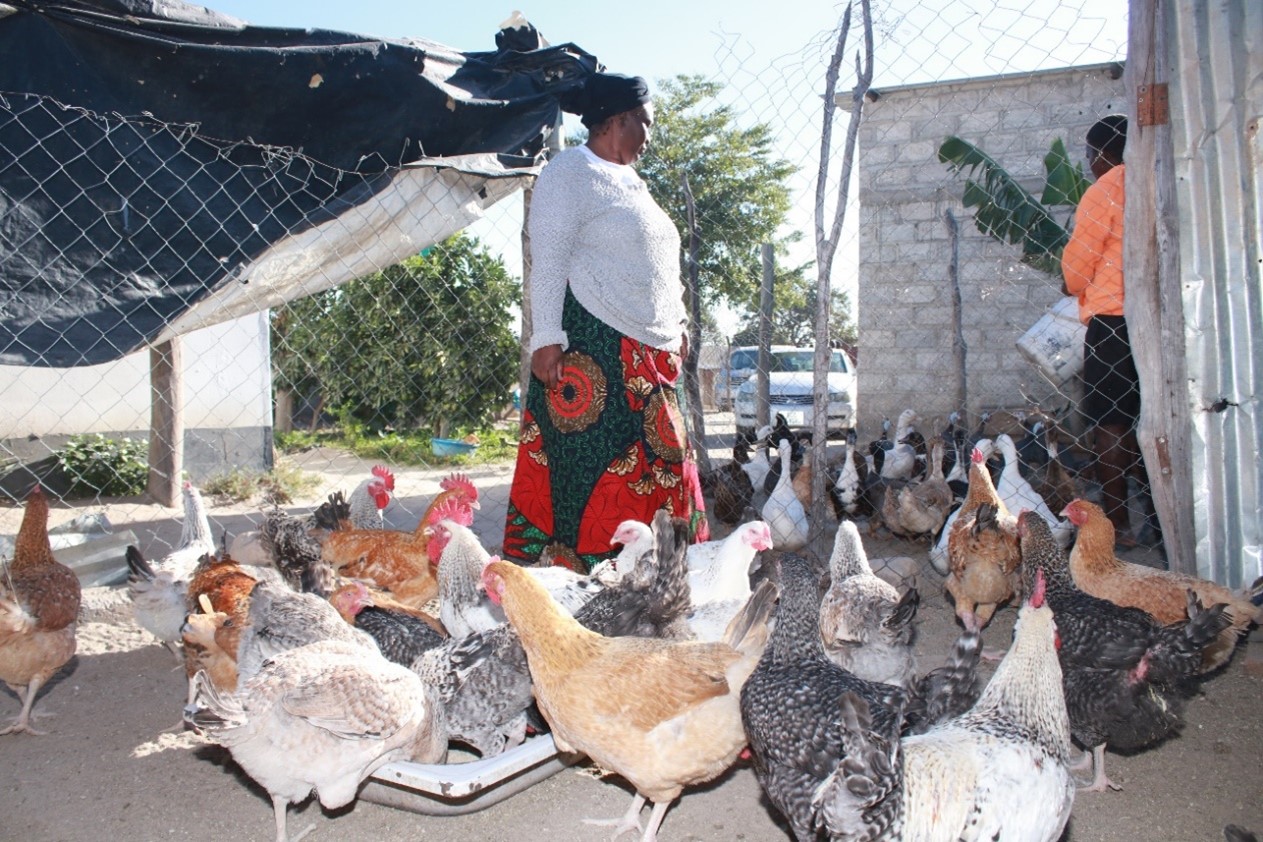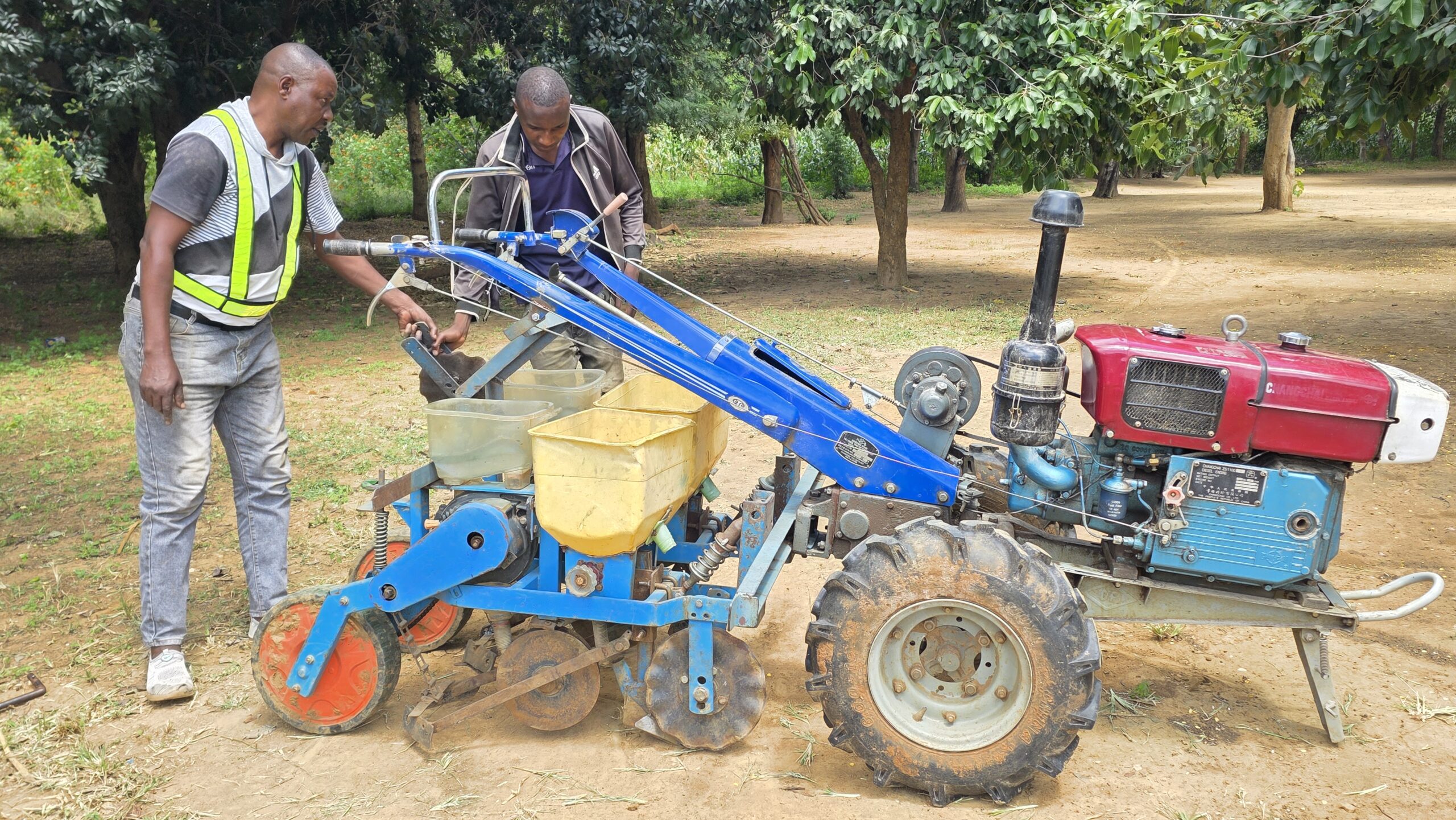
In Dumba Camp, a small farming community in Mazabuka District, Joe Akombaetwa is proving that even in the face of unreliable rains and poor soils, small shifts in how farmers work the land can make all the difference. A farmer since 1992, Joe has lived through the growing impacts of climate change, its frequent shocks to the rain-fed systems, and the high risks it brings to farming families in Zambia’s Southern Province. For the past five years, he has worked as one of the earliest mechanization service providers (SPs) under the European Union-funded Sustainable Intensification of Smallholder Farming Systems in Zambia (SIFAZ) project. As a SIFAZ service provider, Joe acquired a set of machinery, including a two-wheel tractor, a trailer, a multi-crop thresher, and a sheller in 2021. Since then, he has been offering paid mechanization services to farmers in his community. But more than a service provider, Joe is an innovator, a machinery fabricator, and a businessman, creating tailor-made climate-smart mechanization solutions with the support of the SIFAZ project, responding directly to the challenges faced by farmers in his community.
Grounding innovation in reality
Joe’s innovations aren’t conceived in a lab—they’re forged in the field, shaped by the lived realities of his fellow smallholder farmers. One of his earliest breakthroughs came when he collaborated with SIFAZ engineers to design a T-bar to modify the Chinese single-row, no-till multi-crop planters into a double-row planter for a two-wheel tractor, allowing simultaneous planting of two rows instead of just one.
The original single-row planters, while functional, were slow and inefficient. “We wanted to save time and get the work done faster,” Joe explains. “So, we created the T-bar so that two planters could work together in tandem.”
But the innovation didn’t stop there. Joe received feedback from the farmers on the issue of high side separation between the seed and fertilizer openers on the planter. This high side separation of about 120 mm might be useful to reduce seed burning in an irrigated system for which the planter was developed, but Joe and his client farmers in the rain-fed system noticed reduced early plant growth, evidently resulting from delayed nutrient access by young seedlings of the crops. Further, the furrow covered by the press wheels of the planter was not optimum (leaving some seeds uncovered with soil), leading to germination failures.
With his own hands and tools, together with the SIFAZ engineers, Joe redesigned the seed placement system by better aligning the seed and fertilizer openers (with 50 mm side separation) and developing a flexible seed-covering kit fitted before each press wheel on the planter. These modifications addressed what agronomists refer to as “placement efficiency”, but for Joe, it was simply about “getting the seed and fertilizer placed close to each other for the plants to access the fertilizer early and firmly cover the seeds for optimum emergence.” To further improve performance, he added a balancing bar to help stabilize the planter across uneven ground, making the machine more practical for Southern Province’s uneven terrains and varying soil textures.
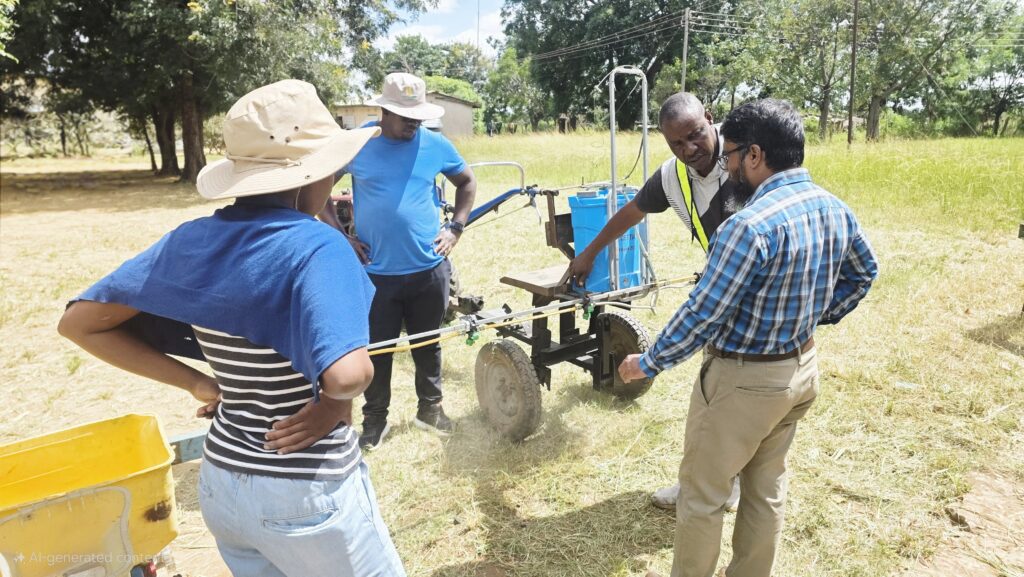
Bridging science with farmer-led solutions
Joe’s hands-on creativity is not new. Back in 2010, he was part of the team that co-developed an animal-drawn ripper, a widely adopted tool that aligns with Conservation Agriculture (CA) principles by reducing soil disturbance.
With a background in blacksmithing and metal fabrication from Kasisi, and early career exposure to seed certification at ACCI in Chilanga, Joe has long moved between formal agriculture and on-the-ground adaptation. Joe is aware of declining draft animals and the aging of the farmers in Zambia, which adds to the challenges faced by smallholder farmers. He sees a declining interest of rural youths in agriculture who do not want to walk behind the beasts or do labor-intensive manual work. Observing the ease with which large-scale commercial farmers operate rippers and boom sprayers, Joe wondered, “Why not adapt this to smallholder needs?”
Joe designed a double-row ripper and a mini boom sprayer for use with a two-wheel tractor. Compared to the traditional animal-drawn single-row rippers or the knapsack sprayers, the two-wheel tractor double-row ripper saves not only time, costs, and drudgery, but also makes farming interesting. “In just ten minutes, I can finish spraying a 16 m by 39 m field,” he says. It’s a leap in efficiency, and for farmers, who often juggle time, labor, and resource constraints, it’s a game-changer! Joe has sold a few rippers and boom sprayers to his neighboring farmers and different projects. The demand for the machinery is on the rise, which encourages him as a rural manufacturer.
Business with a purpose
Joe isn’t only an innovator; he’s also a sharp businessman. From ripping and planting to boom spraying and shelling maize, his mechanization services are in high demand among farmers in and around Dumba Camp. “Ripping has been the most profitable,” he notes. “Almost every farmer now wants it because of the sustainable farming practices introduced by SIFAZ.” He charges based on plot size and crop type, typically around ZMW 200–450 per hectare (approximately US$7–16) for services like no-till planting. But he also knows the realities farmers face. “Sometimes, I negotiate. I don’t want the price to scare away the farmers.” Demonstration days and field shows are his marketing lifeline. From the Cotton Development Trust-organized mechanization field days to local radio promotions, Joe has built a network of trust and visibility. He’s become a go-to name in the Dumba Camp and beyond.
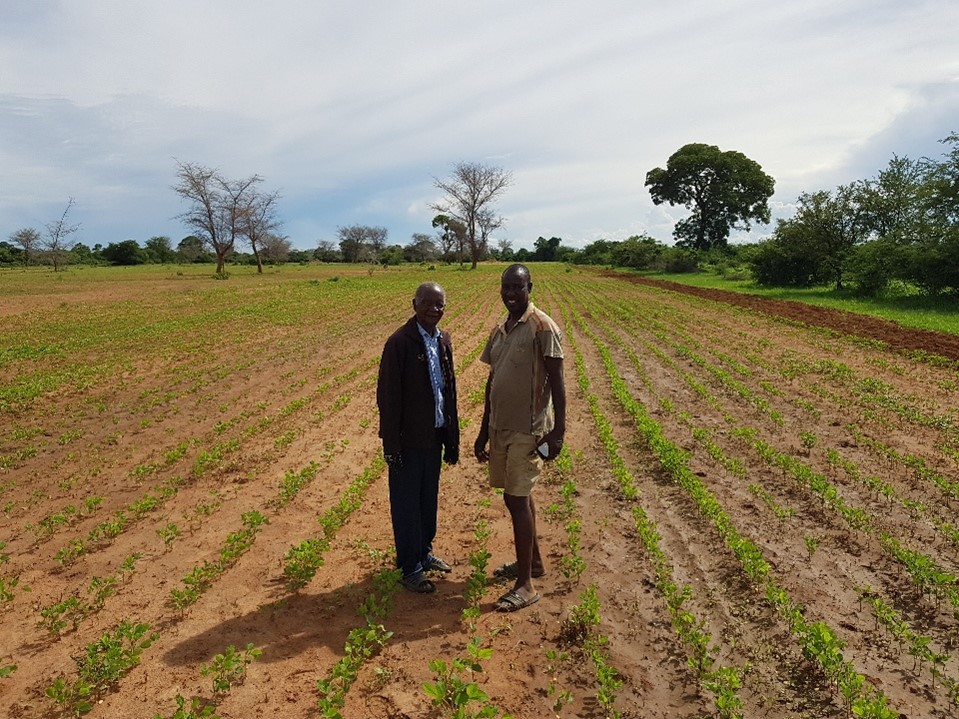
Staying afloat in tough seasons
Last season, the El Niño-induced drought was a huge blow in farmers’ fields. Poor and uneven rainfall and economic strain slashed demand for mechanization services. But Joe stayed afloat by leaning on his farmer instincts. He didn’t sell off all his harvest, but instead, he stored 100 bags of maize and sold another 100 bags to have money for living. That food sovereignty, paired with diversified income from shelling and ripping, kept his business breathing through the drought.
A legacy in the making
Behind the machines and modifications is a father of five, two of whom are already following in his footsteps, bringing civil engineering skills into the family’s growing innovation portfolio. It’s a quiet generational shift powered by resilience, knowledge sharing, and an openness to adapt. Joe’s story reminds us that the future of farming isn’t only shaped by distant policies or global climate models, but also built, welded, and tested in the fields of Southern Zambia, where farmer-innovators like Joe bridge the gap between science and local adaptation.
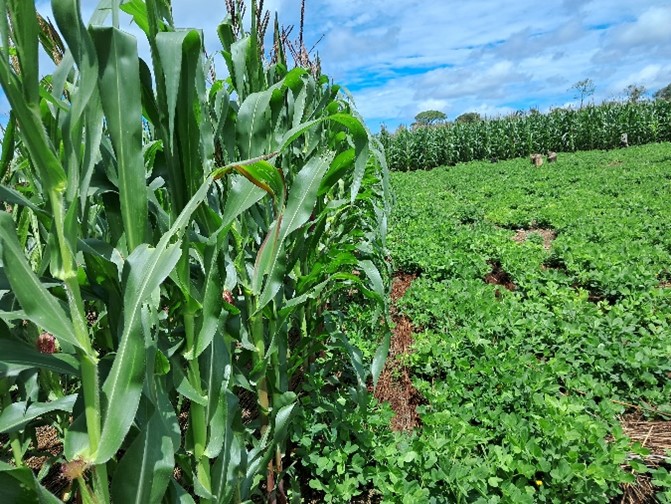
 Climate adaptation and mitigation
Climate adaptation and mitigation 